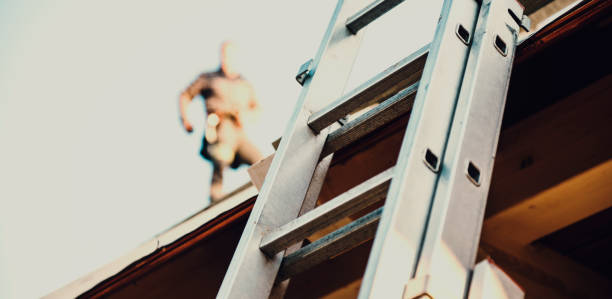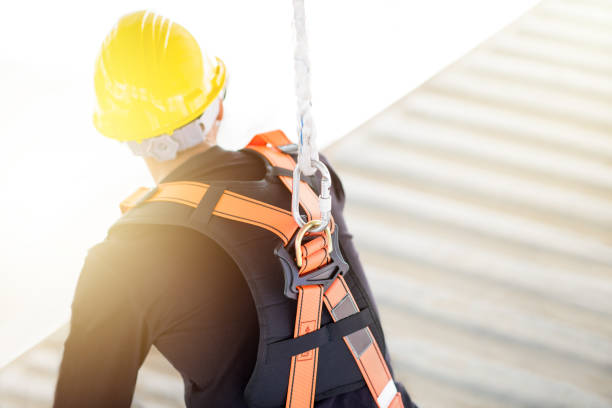Around 41 percent of people are at least a little scared of heights, and five to 10 percent are so afraid of heights that they could be diagnosed with a clinical phobia — so it’s no surprise that folks often wonder how roofers can do their jobs so confidently!
It’s true, of course, that the best roofers have the right personalities to be on the job, and that a fear of heights doesn’t fit into that profile. Following safety protocols gives roofers the assurance they need that they are safe, though.

All employers in the construction industry are required to provide safety training, including roofing contractors, and all employees have to follow them. Protecting roofers on the job is a large undertaking, and workers need to be aware of a broad number of different protocols. They include — but definitely aren’t limited to:
- The use of a personal fall arrest system (PFAS), which includes a safety harness that anchors the worker to a safe point to prevent dangerous falls.
- The installation of a guardrail system on tall roofs, for the duration of the job.
- Safety checks to ensure that the ladders all roofers rely on are in good working order, placed at the right angle, and properly secured.
- The use of aerial lifts.
- Regular training to ensure that workers are aware of the safety protocols that can save their lives, and will follow these protocols at all times.
While safety protocols to protect roofing workers are applied across the industry, there are always ways to improve safety. What can roofing contractors do better?
- Assessing a New Job Site from All Angles
Each new job site has unique hazards, and safety is raised across the board when roofing contractors make thoroughly inspecting them second nature. Addressing the challenges encountered onsite allows roofing contractors to take steps that won’t just protect workers, but also homeowners and bystanders.
Recommended steps to take while assessing a new job site include:
- Determining the pitch of the roof.
- Determining whether it is necessary to install covers on skylights and other roof openings in case of falls.
- Marking trees which could be damaged, leading to falling branches, and taking steps to protect them.
- Providing Regular Employee Safety Training Sessions
Confident workers build on their skills and experience, and may be under the impression that the safety protocols do not apply to them. To prevent this kind of bravado, it’s important that employees do not only engage in safety training when mandated, but regularly — so that they gain refresher courses that will make following protocol second nature. Encourage workers to read the OSHA manual on protecting roofing workers as well. Their safety is at stake, after all.
- Formulate a Rescue Plan in Case of an Accident
Safety harnesses work. They save lives. Despite that, accidents do happen occasionally — and when they do, you will be glad to have a rescue plan in place. It’s always good to know precisely what to do, who will engage in rescue attempts before emergency services arrive, and what equipment will be used in the process, just in case.
About J.O.N. Construction, Inc
J.O.N. Construction, Inc provides residential & commercial roofing, siding, and window installation & repair services across Allentown, Pennsylvania and surrounding areas. We are a family owned company, our roofing contractors are trained in-house on safety, clean-up, and quality standards.
Call us today at (610) 841-3722 and you won’t be disappointed with our service.


